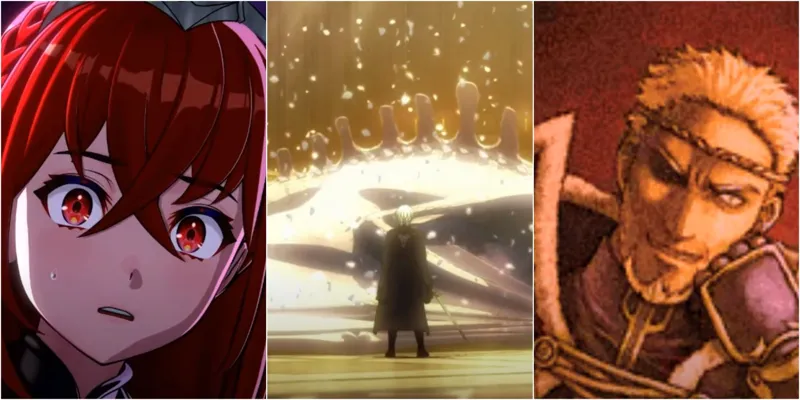The realm of Fire Emblem is known for its mature and solemn narratives. While many of these games wrap up on a positive note, a few stand out for their somber conclusions. The presence of heinous villains in Fire Emblem often leaves an irreversible mark on the world, leading to endings shrouded in darkness and despair.
Occasionally, the games subtly suggest that the world may not be as safe as presumed, hinting at hidden malevolence waiting to emerge from the shadows. Let's delve into the Fire Emblem titles that deviate from the typical heroic resolutions and instead embrace a much darker tone in their final chapters.
5 Fire Emblem: The Blazing Blade
The Awakening of a Monstrous Demon Dragon by a Power-Hungry Prince Unveils a Grim Future

As the tale unfolds in Fire Emblem: The Blazing Blade, a decision to save Prince Zephiel takes a dark turn. The prince's awakening of a Demon Dragon, a force far mightier than conventional dragons, threatens to plunge the world into chaos. This eerie revelation, following encounters with formidable dragons earlier, sets the stage for the next installment, The Binding Blade, where Zephiel assumes the role of the primary antagonist.
4 Fire Emblem Fates: Conquest
Corrin's Agonizing Guilt Over Slaying Their Hoshidan Kin Casts a Shadow on the War's End in Conquest

Despite the resolution of the war between the Hoshidan and Nohr realms in Fire Emblem: Conquest, Corrin's demeanor hints at underlying turmoil. Forced to confront and defeat their Hoshidan siblings, including a possessed Takumi, the aftermath is poignant and grim. The emotional turmoil and violence witnessed in the final battle shed light on the true cost of war, raising doubts about Corrin's deeds and the morality of their choices.
3 Fire Emblem: Three Houses (Silver Snow Ending)
Byleth Assumes Leadership in a Fractured World, Signaling Uncertain Times Despite Edelgard's Fall

In a pivotal moment during Fire Emblem: Three Houses, Edelgard's ambitions lead to a destructive conflict, culminating in Byleth's unexpected ascent to lead the church. The fractured state of Fodlan, with no clear leadership, hints at a tumultuous future. The uncertain fate of Crests and the dissolution of nations paint a bleak picture, emphasizing the cyclical nature of violence and oppression.
2 Fire Emblem: Engage (Bad Ending)
Sombron's Ruthless Reign Leads to Tragic Consequences for Alear in Engage's Bleak Finale

The climax of Fire Emblem: Engage offers two diverging paths based on the player's performance. A somber conclusion unfolds if Alear succumbs to Sombron's dark influence, resulting in devastating losses and a haunting transformation. The stark shift from the game's vibrant tone to this grim outcome adds a chilling depth to the narrative.
1 Fire Emblem: The Sacred Stones
Eirika and Ephraim Grapple with Hope Amidst the Ruins of a Devastated Empire

In the narrative of The Sacred Stones, the catastrophic events surrounding the Grado Empire unfold tragically. Despite attempts to avert disaster, the kingdom faces ruin and widespread devastation. Eirika and Ephraim's resilience in the face of immense loss symbolizes a glimmer of hope amidst the prevailing darkness, highlighting the profound impact of war and tragedy.

